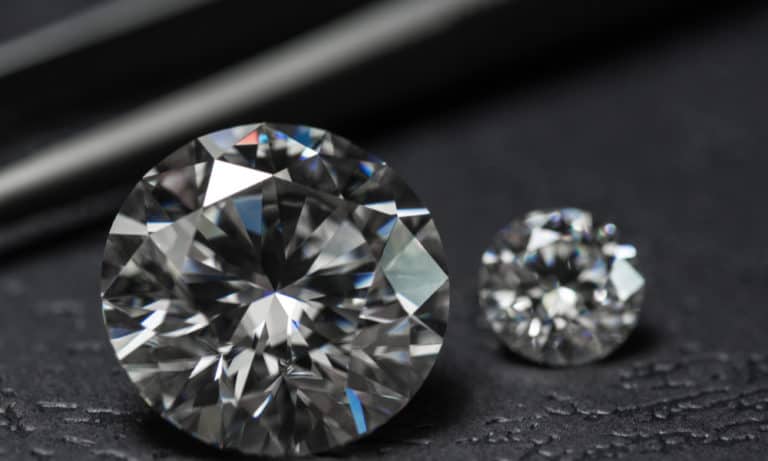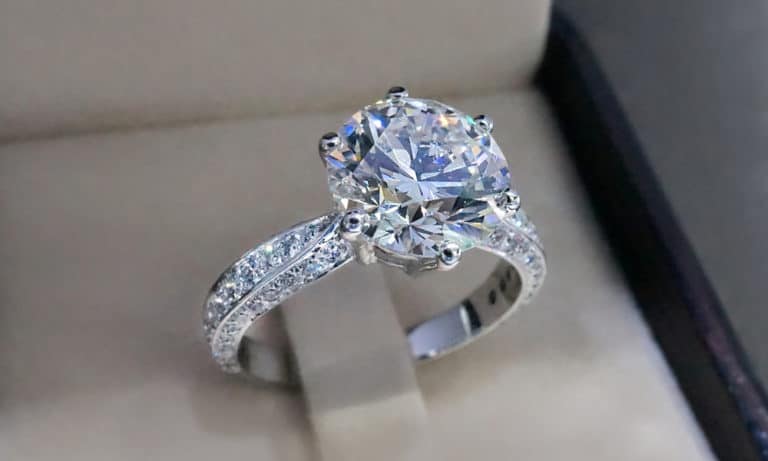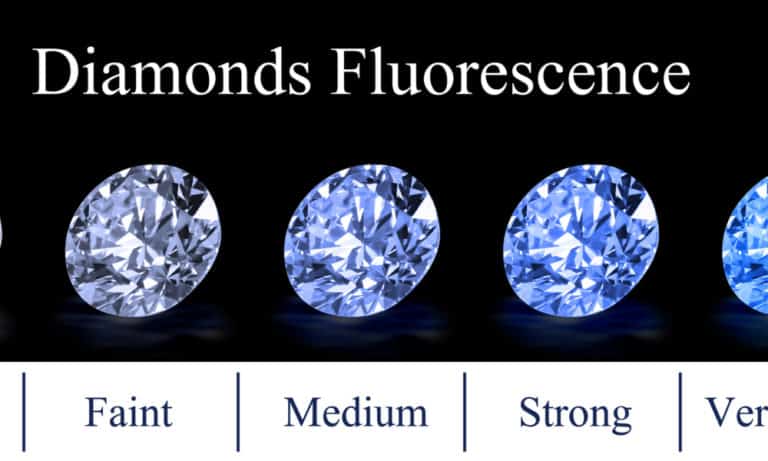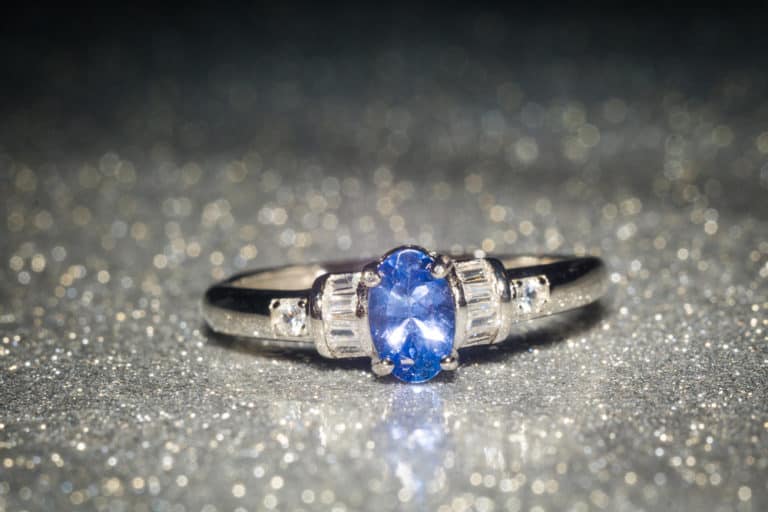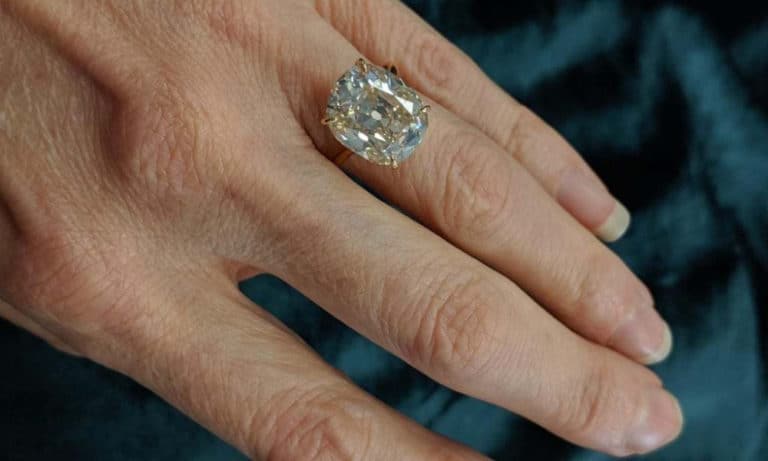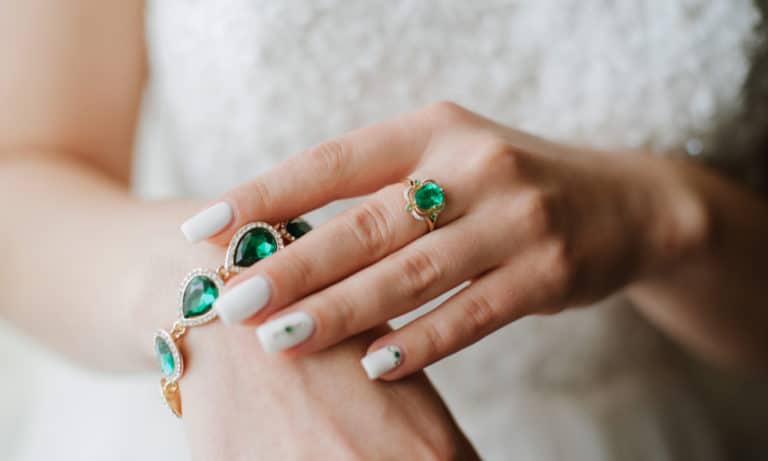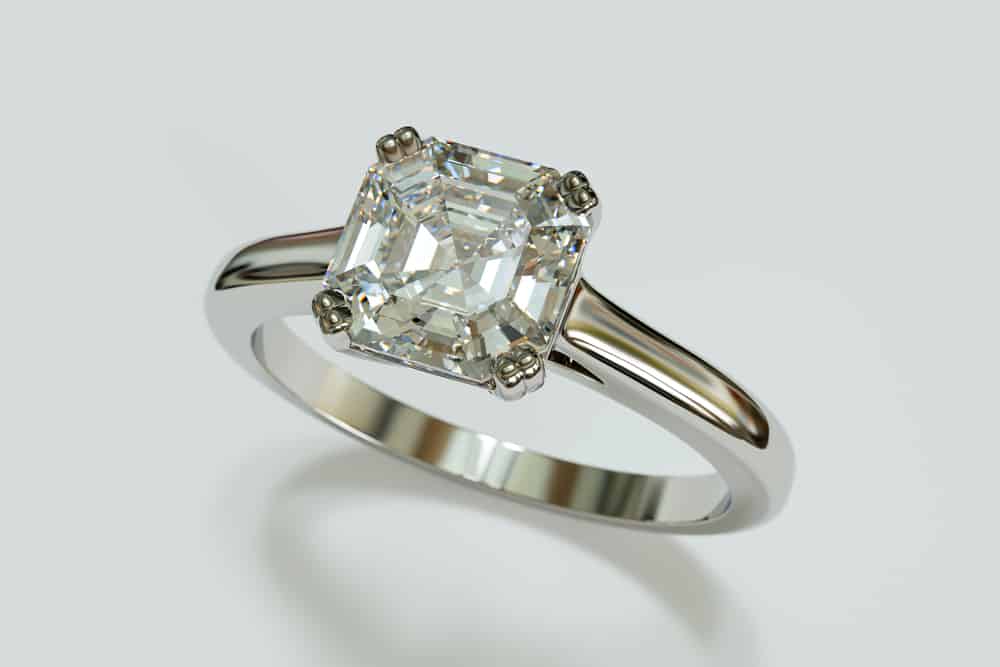
If you want to try something different from classic Round cut diamonds, a square-shaped Asscher cut might be an appropriate option for you. They look vintage, decent, and incredibly sleek.
So, if you’re looking forward to getting your queries answers regarding the Asscher cut, you’re at the right place! What is an Asscher Cut Diamond? Its history? Price? Disadvantages? We’ll discuss everything here.
What is an Asscher Cut Diamond?
Asscher cut, also called ‘square Emerald cut’ in the modern jewelry industry, was first introduced in 1902 by the Asscher brothers from Holland. These cuts have step-like layered facets, just as you’d find in an Emerald cut. Asscher cuts are octagonal diamonds with a square shape.
The arrangement of facets in Asscher cuts gives the diamonds a unique antique and old-world look. And the ‘hall of mirrors’ effect gives them decent sparkles instead of flashy and shiny brilliance as in classic round cuts.
History of Asscher Cut Diamonds
The history of Asscher cut diamonds dates back to the early 90s. The original Asscher cut, developed by Joseph Asscher, had 58 facets and was patented by the Asscher family, i.e., only their company Asscher Diamond Company could produce and commercialize the cut.
The patent for the original Asscher cut expired during World War II. Thus, many jewelers produce this 58 faceted Asscher cut today. The Asschers were deported from the Netherlands along with their hundreds of diamond polishers.
Only a handful of them survived after the war, and they had no company to return to. But the Asschers decided to rebuild with what they had remaining and decided to not give up on their family business so easily.
They were then rewarded with a royal title by the Majesty Queen Juliana of Holland for their commendable role in the diamond industry for the century. Now, Asscher Diamond Company had become Royal Asscher Diamond Company.
Later, the Asscher family added 16 facets and a high crown to the original cut. This design was then again protected with an International patent.
What To Look For While Buying An Asscher Cut Diamond?
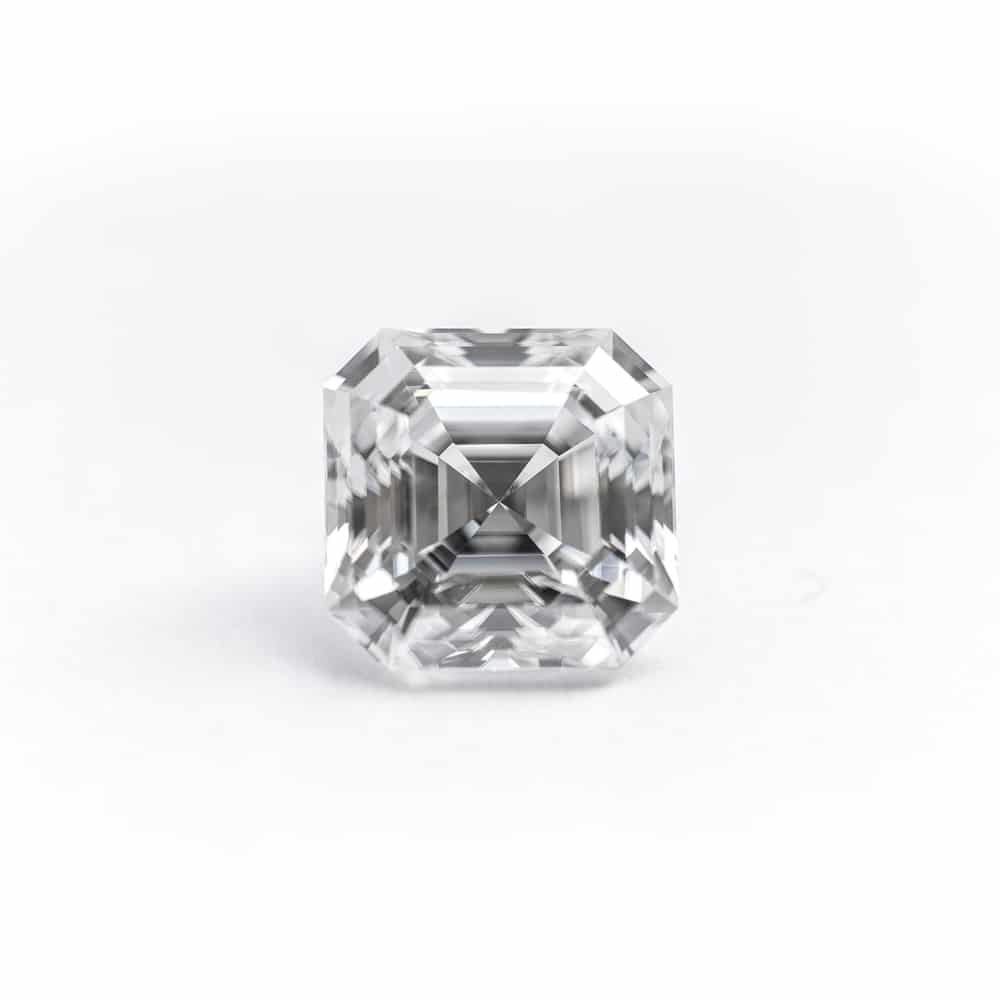
While buying an Asscher diamond, you can make no mistakes! The facet arrangement in Asscher cuts makes sure that any imperfections are clearly noticed. And so, the most important thing you should make sure of while buying an Asscher cut is that the diamond is of higher clarity.
Like any other diamond, color and cut also matter while buying an Asscher cut diamond. Let’s discuss all of them in detail.
1. Color
Asscher cuts are open faceted and are not brilliant cuts, and thus, they cannot mask the color imperfection as some other brilliant cuts do. Diamonds are graded from D-Z on the basis of the GIA color scale, D being colorless and Z being light yellow or almost brown.
When it comes to Asscher cuts, going below I is a big no-no. Always opt for color grade higher than I. If possible, you can consider stretching your budget for H or G. Color grade of G, H and I, gives you the best value for Asscher cuts.
Though you get a flawless diamond in D and E, investing thousands more just to increase a few grades of color for Asscher cuts is not quite worth it.
2. Clarity
Step cuts like Emerald and Asscher cuts are designed to flaunt the simplicity and luster of the precious gemstone. Unlike brilliant cut diamonds, they don’t exhibit firework sparkle. So, the main focus while buying such sharp and unforgiving cuts should be on their clarity.
In VS1 and VS2 grade clarity, inclusions are visible under 10X magnification. But if you know the location, the flaws can be visible to the naked eye. In the case of Asscher cuts, even VS2 grade inclusions are easily noticeable to the eyes. So, we don’t recommend going below VS2.
However, if you want to go a grade or two below, make sure that the inclusions are not in the center face-up area of the diamond. If the inclusions are around the sides and corner, they can be hidden using special ring settings. So, make sure you talk to an expert gemologist.
3. Cut
When buying Asscher cut diamonds, the lower the depth, the better. Unlike in the case of brilliant cut diamonds, where a certain depth is essential to maintain the brilliance of the diamond, it doesn’t have much significance in step-cuts such as Asscher. So, feel free to go as low as possible.
Look for a depth of around 60% to 68%. The more shallow the stone is, the larger it will look. Depth of under 65% can be challenging to find. Likewise, for the table percentage, staying below 68% is a good idea.
Likewise, your Asscher cut symmetry must be good, very good, or excellent. And, the GIA accepted length to width ratio for Asscher cuts is 1 to 1.05.
Asscher Cut Vs. Princess Cut
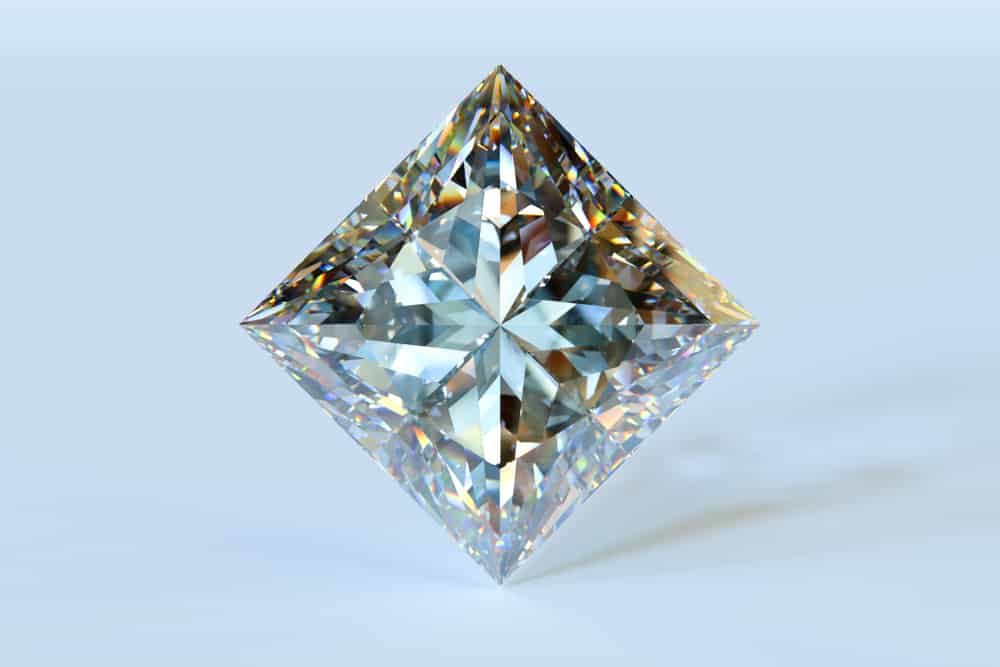
With both Asscher cut and Princess cut diamonds having square shapes, shoppers are often confused about which design to buy. The obsequious difference between the two is that Asscher cut features an octahedral outline while the Princess cut exhibits more brilliance and sparkle.
Moreover, Asscher cuts are not forgiving when it comes to imperfections. On the other hand, Princess cuts can mask a slight yellow tint and a few imperfections. So, if you buy Princess cuts, you can go for a slightly lower clarity and color to stay on a budget.
As for the price, Princess cuts, being more brilliant and popular than Asscher cuts, are slightly expensive than Asscher cuts.
Asscher Cut Vs. Cushion Cut
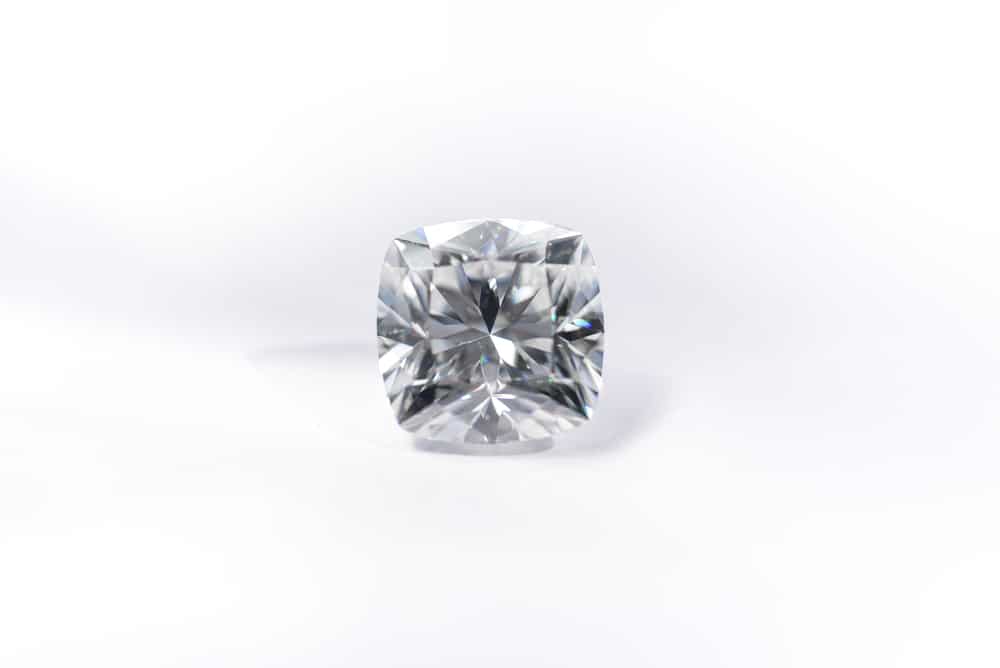
Like a Princess cut, the Cushion cut is also a brilliant cut. Cushion cuts have more facets than Asscher cuts, and thus, they reflect way more light back into the viewer’s eyes.
However, the way these two cuts reflect light is quite different. Asscher cut brilliantly reflects white light, whereas cushion cuts offer more fire: colored light reflection.
Another major difference between these two cuts is that cushion cuts have comparatively rounder corners, making them look more feminine. Whereas the Asscher cuts look more vintage and modest.
Unlike Round cuts diamonds, rough stones are not too much wasted when cutting Asscher, and Cushion cuts diamonds. This reason solely makes these two cuts much more affordable than Round cuts.
Between the two, the price difference is not that big. However, since Ascher cuts, being unforgiving of imperfections, might require a higher grade to exhibit the same appearance as slightly lower grade Cushion cuts. Due to this reason, you might find Cushion cuts relatively affordable.
Asscher Cut Vs. Radiant Cut
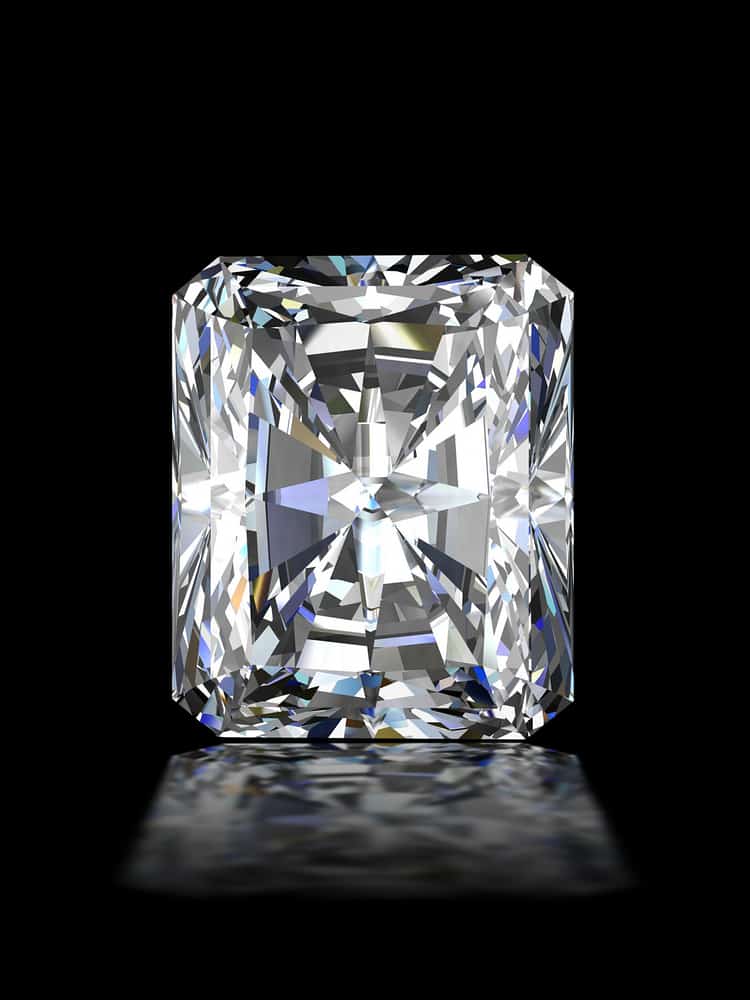
Asscher cut and Radiant cut have a somewhat similar shape: the cut corners give them both an octahedral outline.
However, while Asscher cuts have step-like layered facets, Radiant cuts have triangular facets, which give them a ‘crushed ice’ look. Moreover, the corner edges of Radiant cuts are and angled at 45 degrees.
Second to Round cuts, Radiant cut diamonds offer the most brilliance. Because of less brilliance, you can expect to pay lesser for Asscher cuts when compared to Radiant cuts of the same carat and quality.
Is Ascher Cut expensive?
Ascher cuts are relatively cost-effective diamond cuts. They can cost as much as 30%-40% less than their round counterparts of the same quality.
The main reason for this cost efficiency is that a major part of the rough stone is maintained while cutting Asscher cut diamonds. However, in the case of Round cuts, most part of the rough stone goes to waste.
For this 1.22 carat D color, FL clarity, with a very good Asscher cut diamond from Blue Nile, you’ll be paying $16,801. Likewise, this 1.01 carat G color, VS2 clarity, and a very good cut Asscher diamond from the same store cost you $4,194.
Asscher Cut – The Downsides
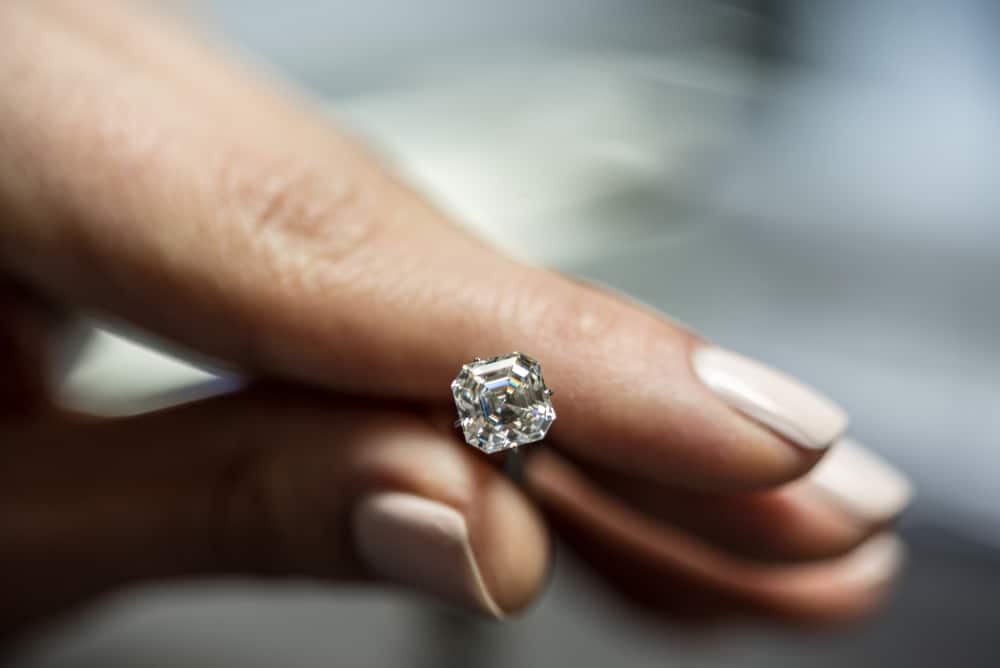
While this classic vintage cut looks stunning, it may not be for everyone. Ascher cuts have a few shortcomings. Let’s discuss them in detail to help you decide if this cut for you.
1. Asscher cuts not as sparkly as other brilliant cut diamonds
If you love brilliant sparkly diamonds, Asscher cuts might be too basic for you. Go for Princess cuts or Radiant cuts instead, or a Round cut if you don’t mind the round shape.
2. Asscher cuts look smaller
Asscher cuts are bottom-heavy cuts, i.e., their carat weight is more at the base than the surface. So, if you’re looking for bigger-looking diamonds, go with bigger shapes such as Round cuts, Pear shape, and Emerald cuts.
3. Asscher cuts don’t have enough choices to choose from
Asscher cut you’ve visualized in your mind might be quite difficult to find. Ascher cuts are not quite popular as other shapes such as Round and Princess. So, you might not have enough choices.
4. Good cut Asscher are hard to find
Good cuts Asscher diamonds are hard to find. In most cases, they’re either too deep or lack symmetry. Thus, finding a good cut Asscher requires expert analysis.
Summary
Basic and elegant cuts like Asscher cuts prove that diamonds don’t have to have extravagant brilliance and sparkle to stand out. These cuts are adored for their simplicity and classic luster.
So, if you’re someone who is more drawn towards the depth of endless sparkless that an Asscher cut exhibits rather than the fiery brilliance reflected by brilliant cuts, Asscher cut is definitely for you.

